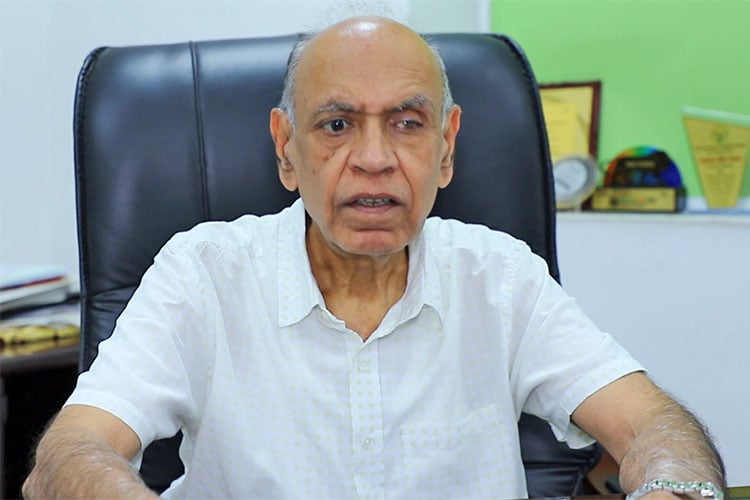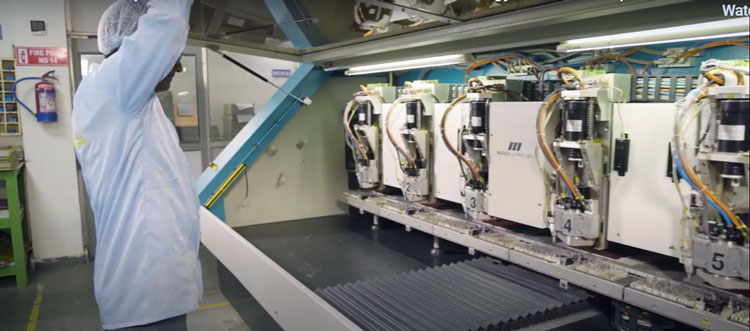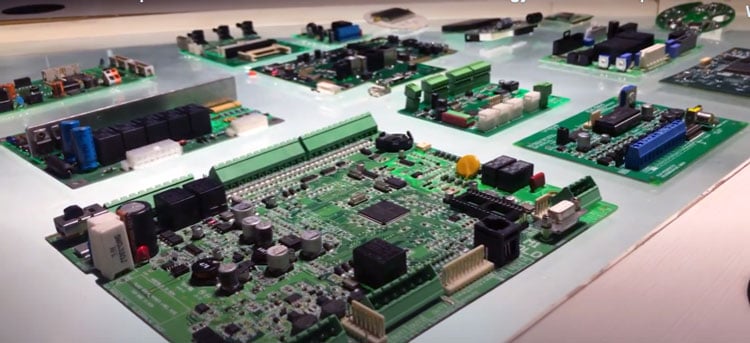
Q. What are your views on the current electronics and semiconductor manufacturing ecosystem in India? Where do you think India currently stands at this time when compared to other developed countries?
There are a variety of reasons. One of the main reasons was that India signed the Information Technology Agreement (ITA-1) in 1996, which led to zero duty regime and whatever domestic manufacturing was taking place that time vanished because the Indian industry could not compete with foreign imports as zero duty because of the economy of scale. The Indian demand was very low and therefore the local manufacturing was not able to produce it at competitive price and therefore slowly and slowly whatever manufacturing was taking place got diminished. However, as we stand here in 2022, a lot has changed. But since 2015-16 the government has given tremendous impetus to electronics manufacturing along with unleashing the National Policy on Electronics that has triggered growth in hardware manufacturing. Looking ahead in the next few years, we see tremendous growth potential in electronics manufacturing in the country for a variety of reasons. One, the domestic demand is growing tremendously. Due to geopolitical reasons, the world is now looking at “China Plus One”. Earlier, the entire world went to China because of price competitiveness and they would be able to set-up industries very quickly for large-scale manufacturing. Not only America, the whole world is now looking for alternative sources of manufacturing that will help India to boost its growth.
Q. During the pandemic, production was halted and manufacturing was delayed. What do you think are the major challenges the industry is still struggling with and what are the solutions required?
Yes, certainly I accept that there are major challenges like availability of raw materials for product and component manufacturing, the logistics costs in our country are very high, financial rates are higher, interest rates are higher compared to other competing countries. For example, the interest rates in India are about 8-10 percent, while in China, Taiwan, and Japan the same is available at 1-2 percent. But, we have to find ways to overcome them. The good thing is the other countries, which are also emerging in the sector India has a large demand base of its own. If you compare with Vietnam, Thailand, Malaysia, their demand is minuscule. Last year, the total demand for electronic products in India was about $120-$140 billion, which is expected to grow much higher. The government of India, MeitY, as well as industry research reveals that the demand is going to increase upto $300 billion by 2026. To overcome the challenges, the government has come out with very good incentives and they have created an environment, which is pro-investment.

Q. The whole buzz is about developing and enhancing the electronics manufacturing ecosystem. But, India still outsources huge chunks of raw materials and components from other countries, mostly from China. In that scenario, how will you help the industry to boost its growth in the market?
You have to look at it in two ways, one is we have a very long race to go. This is like a marathon where you do not start running from day one. You start slowly, gain momentum, and in the last mile that is where you split. The same culture is there in electronics manufacturing. There are challenges, but on the one hand, we have to develop an ecosystem and infrastructure for components manufacturing so that there is high-value addition and on the other hand, currently our electronics consumption is very low compared to the population we have. We have 16 percent of the world’s population and the consumption rate is 3 percent of the global electronic production. The point is how do we accelerate that. We also have to move quickly with the help of MNCs like Dell, HP, Lenovo, Apple etc. They are the large manufacturers of IT hardware, mobile phones, data centers, and so, they will come here initially and like to use their current supply chain from overseas. But, once everyone sees the demand developing in the country, even their supply vendors will set-up shops here for components manufacturing. It is in the interest of MNCs that because of the logistics issues they will want component manufacturing in India. It will then help Indian manufacturers to grow also.
Q. The import duty is still very high and the taxation structure is very complex as per various industry leaders in the country. Would you wish to highlight any message?
Looking back at five to seven years ago, when the taxation was really very high, income tax rates were very high, there were all kinds of excise duty, sales tax etc. Now, all that has been subsumed to Goods and Service Tax (GST), which is one of the biggest reforms in the country. Even the income tax was high at 34 percent and now, the corporate income tax has been reduced to 25 percent plus some surcharge. For new companies that are coming in the country, the income tax has been reduced to 15 percent since 2018. I am very bullish on the tax reforms taking place.
Q. How long has the Sahasra Group been serving the electronics industry to grow in the country?
Our vendors have been supportive and hence, we have grown over the years and diversified in other areas. Other than Electronic Manufacturing Service (EMS), we have started with LED lights as a product, which is now manufactured in East Africa. Then in 2016, we ventured into memory products and we are the sole supplier to Sony not only for the Indian market but we are also exporting to them in the South East Asia region as well as in the Middle East. We are also selling our memory products to HP as well. So, in 2017 we formed a joint venture with a Taiwnese firm MiTAC and with the help of the financial partnership we are now making motherboards for the data servers for the past two-three years. We have supplied about 3000 motherboards for data server requirements. Now, we are setting-up a plant for semiconductor packaging in Bhiwadi in Rajasthan where the total capital outlay is Rs 150 Crores. We had the challenge of getting the equipment on time because of a shortage of semiconductors. So, we hope to start manufacturing by the end of this year.

Q. Can you please highlight some of the initiatives of your investments over the years and what will be your upcoming investment? Also, what is your current turnover now and how much growth are you expecting in the coming five years?
Sahasra Group plans to invest between Rs 800- Rs 1000 Crore and besides that we are also growing our exports. So, we are planning to invest in a mother company where we do EMS activity for exports. In the coming five years, if I look at the organic growth, which is memory products, LED lighting, EMS business that is poised to grow about a 15 percent CAGR. If you look at the semiconductor packaging, that is a greenfield project for us, but the volume growth is expected to be very significant. Our forecast is that within the next four to five years, we will have a turnover of Rs 600 Crores. For the entire Sahasra group, I also expect that in the coming five to seven years, we will achieve a turnover of Rs 1000 Crores.

